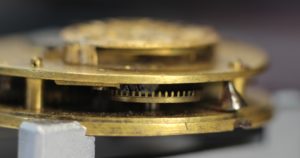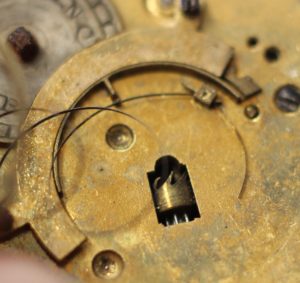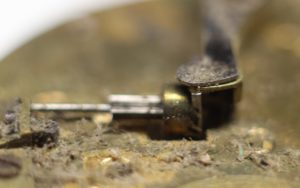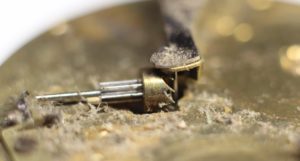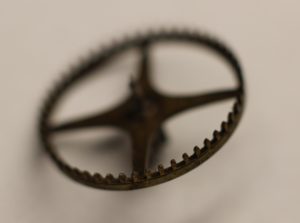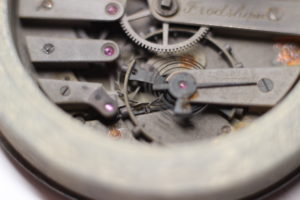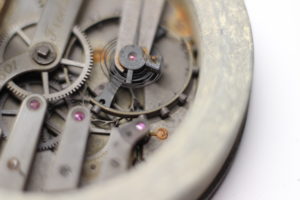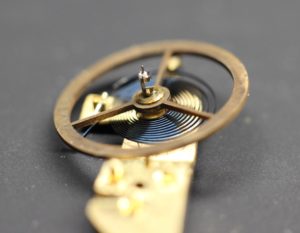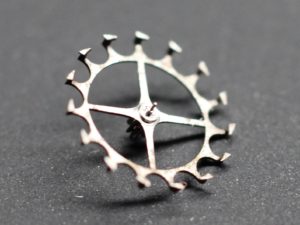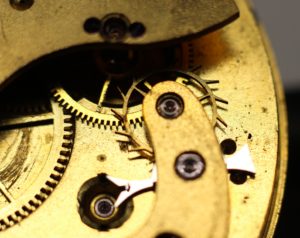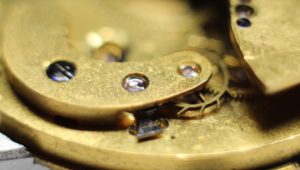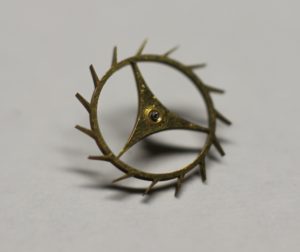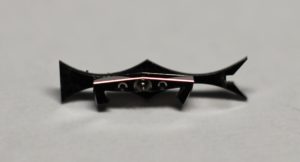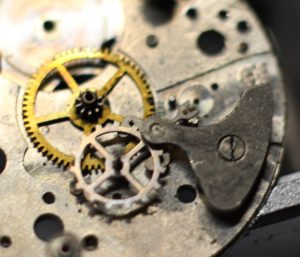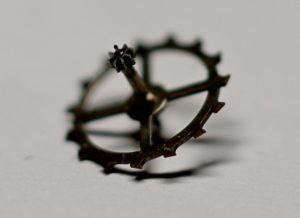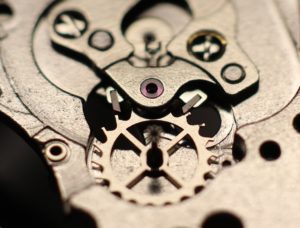I do not cover all the early types of escapements found in antique clocks. I however describe two types of pocket watch escapements that did not make it into wristwatches:
- Verge escapement
- Detent escapement (a very high-tech version did make it into a 21st century wristwatch)
However, the main types of escapements that made their way into wristwatches are:
- Cylinder escapement
- English lever escapement
- Pin lever escapement
- Swiss lever escapement
- Co-axial escapement
Verge escapement
This type of escapement was used for several centuries.
The following video is from the Horloger de la Croix Rousse Youtube channel.
The following pictures are from an antique pocket watch with verge escapement. The balance wheel staff goes through the plate and the wolf-toothed wheel is attached to the underside of the plate. The escape wheel is on the main plate as in any common watch.
The pictures below are taken from an antique pocket watch.
Detent escapement
This escapement was far more precise than any previous type. It’s main drawback and the reason it did not become a common wristwatch escapement is its sensitivity to positional changes.
The following video is from Yukying Lu’s Youtube channel
The pictures below are from an antique marine chronometre.
Cylinder escapement
The cylinder escapement does not require any lever and this has implications in terms of movement layout as the escape wheel sits almost entirely under the balance wheel. In this escapement, the escape wheel is in almost constant contact with the cylinder, leading to friction issues.
The following video is from the Horloger de la Croix Rousse Youtube channel.
The following pictures are from the deconstruction of the EDE pocket watch.
English lever escapement
The English lever escapement changes the positioning of the wheels. Whereas the balance wheel, lever and escape wheel are in a straight line in a Swiss lever design, with the English lever they form a 90 degree angle.
The pictures below are taken from the George Oram & Son watch.
Pin lever escapement
Very similar to the Swiss lever escapement, but cheaper to produce as it has no jewelled pallets. The lack of jewels impacts both precision and durability.
Swiss lever escapement
The almost ubiquitous escapement for nearly a century. Not the most precise or the cheapest, but it offers the best balance between precision, durability, ease of service and production price.
The following video is from the Salwald Youtube channel.
The following pictures are from an ST2130 (clone of the ETA 2824).
Co-axial escapement
The advantage of the co-axial is to change the sliding motion into a pushing motion, thus increasing power efficiency and reducing the need for lubrication.
The following video is from the Monochrome Watches Youtube channel.
Those interested in this escapement should watch Roger Smith’s lecture at the Horological Society of New York.
